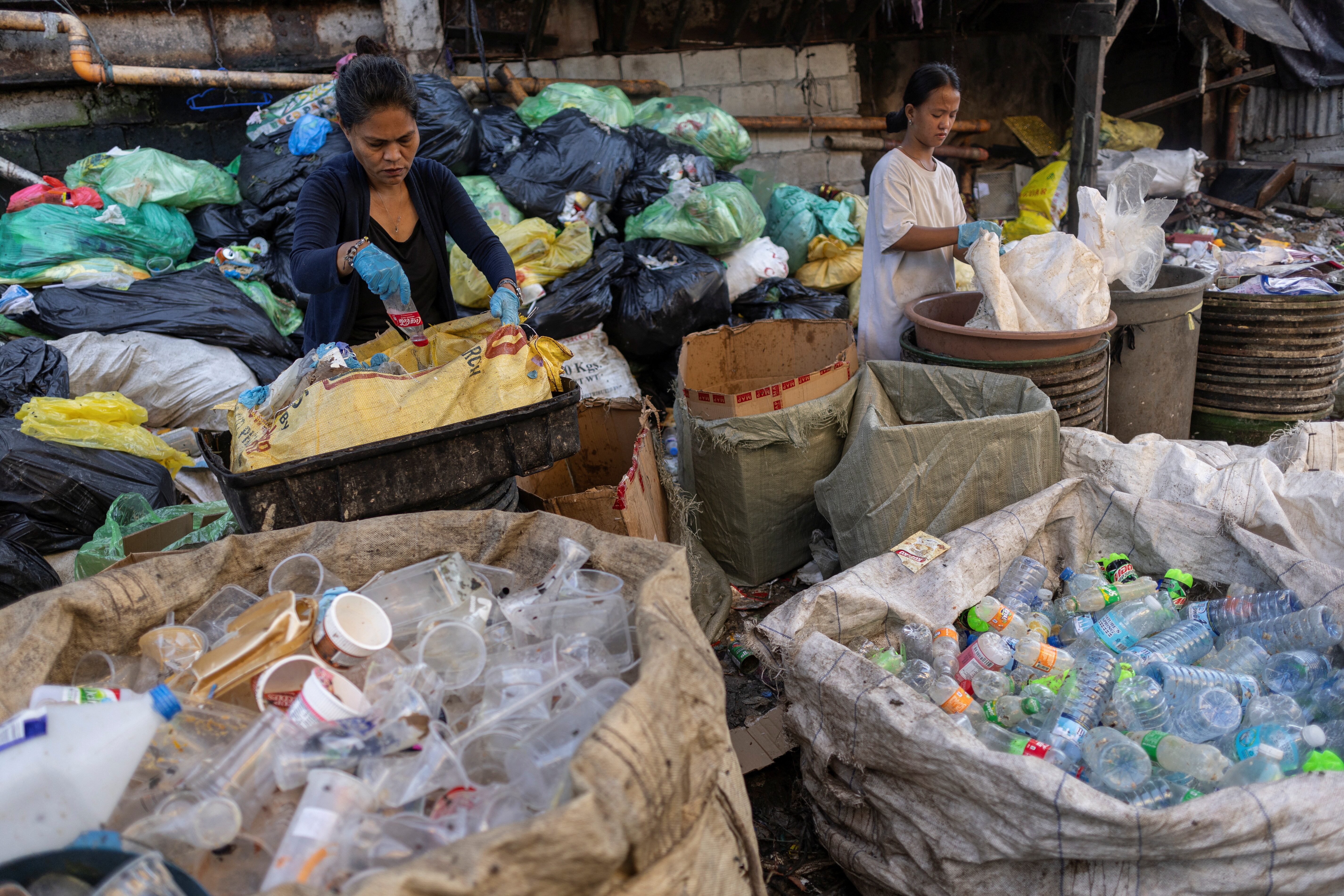The view from Davos: How to accelerate action on the circular economy

The future of our environment may seem bleak, but a growing movement believe a circular economy is the future. Image: REUTERS/Stringer
We live in a world where 90 billion tonnes of resources are extracted every year to meet society‘s demands, and that number is expected to more than double by 2050. The sheer scale of natural resource extraction is cause for concern, but the additional challenge is that today what we take from the environment is not equivalent to what we put back in – we mix, melt, mould, and burn materials in such a way that natural systems can’t reabsorb them.
As a result, the resources that once existed as part of the natural environment end up as waste and pollution that harm humans and nature alike. We see plastics accumulating in the world’s oceans, electronic waste polluting the air and soil, and the burning of fossil fuels creating blankets of smog in the world’s most populous cities. The resulting diseases caused by this and other forms of pollution were responsible for an estimated nine million premature deaths in 2015 - a shocking 16% of all deaths worldwide. Our natural systems are fractured.
While this picture seems bleak, there is a growing movement of innovators, policy makers and business leaders who envisage a different future – one where waste and pollution are designed out of the economic system in a circular economy, which also promised incredible economic opportunity. Last week in Davos they converged to celebrate circular economy leadership, but more importantly, shape efforts to help scale- and speed-up work to get the circular economy off the ground.
Here are a few of the highlights:
The week kicked off on a positive note with the fourth Annual Circulars Award that celebrated circular economy innovators and champions from around the world - from Banyon nation who uses plastic waste as a resource for businesses in India, to AMP robotics who is bringing artificial intelligence and robotics to the recycling industry to fundamentally change the costs of recycling. The Ellen MacArthur Foundation also announced the winner of the Plastics Innovation Prize, which challenged designers, entrepreneurs, academics and scientists to rethink the plastics system and eliminate plastics packaging waste.
Frans van Houten, CEO, Philips in accepting his award for circular economy leadership, cautioned that while there is cause to celebrate the incredible innovations that are emerging, we still have a long way to go. Only 9% of the resources in today’s economy are cycled back into use, as highlighted in the Circular Economy Gap report. The rest of the week’s discussions focused on digging into the heart of what needs to happen to scale the circular economy transformation while also launching a series of efforts to help make progress.
Take electronics as an example. The number of electronic devices is expected to grow to 25-50 billion globally by 2020 from around 10 billion in 2015 as the world becomes more connected. This could become a problem as electronics becomes the largest growing waste stream globally. On the flip side, it also represents an untapped opportunity – the value of resources that lay idle within electronic devices is estimated at 55 USD Billion of gold, silver, aluminium and other valuable materials. The question is how to collect, process, and reintegrate these into production processes in a safe and economic way. A preliminary study of secondary material flows in China in collaboration with Tsinghua University begins to explore these questions.
Similar questions emerged in tacking the growing steam of plastic pollution that is flowing into the world’s oceans. The redesign of packaging is critical and so is the development of effective solutions to today’s growing challenge of uncollected and unprocessed plastic waste, in particular in developing economies. Partners are recognizing the need to co-design innovative financing solutions for waste management infrastructure, scale-up community engagement in collection efforts, introduce policy incentives and use innovative technologies that can help on all fronts.
Company leadership to scaling the circular economy transformation is also critical, and picking-up. With the initiative of Royal Philips, a group of companies including ASML, Cisco, Dell, HP, KPN, Mitsubishi Elevators and Vanderland launched a pledge to take full responsibility of their capital assets, encouraging a move towards service based models, smart upgrade paths, or product take-back and remanufacturing programs. The Circular Economy Accelerator promises help the small and medium sized enterprises in these and other value chains make this transformation a reality.
The Platform for Accelerating the Circular Economy – or PACE aims to help take these commitments and further actions to scale with a growing group of 40 leaders and knowledge partners. This year, as government gather in July during the High Level Political Forum in New York to review progress on SDG 12 for sustainable production and consumption, hopefully the efforts discussed and launched over this week will yield further results and impact on the ground.
Don't miss any update on this topic
Create a free account and access your personalized content collection with our latest publications and analyses.
License and Republishing
World Economic Forum articles may be republished in accordance with the Creative Commons Attribution-NonCommercial-NoDerivatives 4.0 International Public License, and in accordance with our Terms of Use.
The views expressed in this article are those of the author alone and not the World Economic Forum.
Stay up to date:
Circular Economy
Related topics:
Forum Stories newsletter
Bringing you weekly curated insights and analysis on the global issues that matter.
More on Circular EconomySee all
Felipe Basso
November 13, 2025







